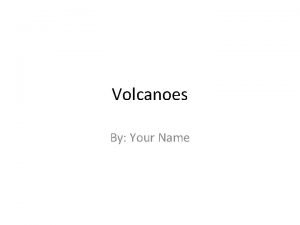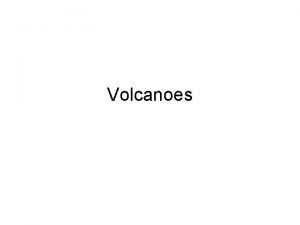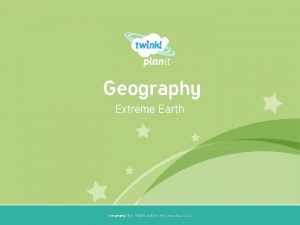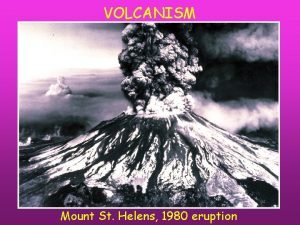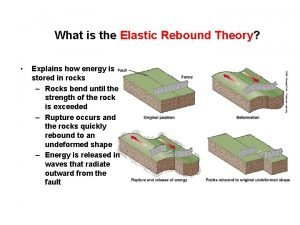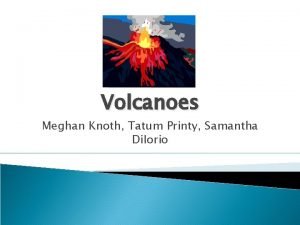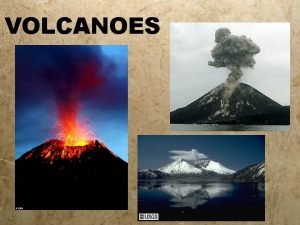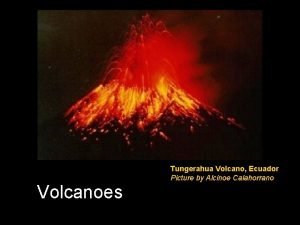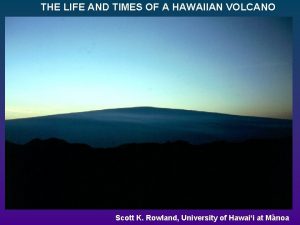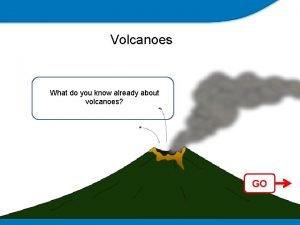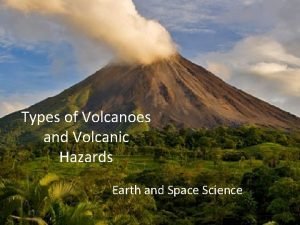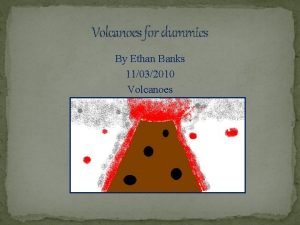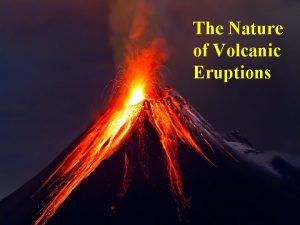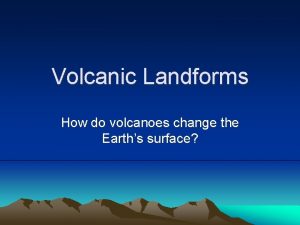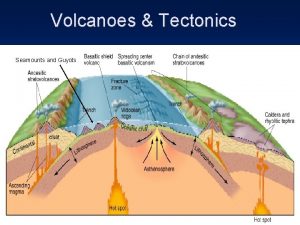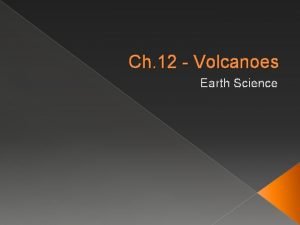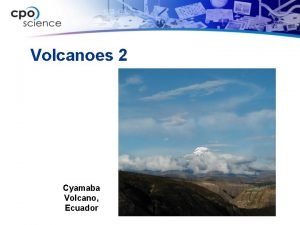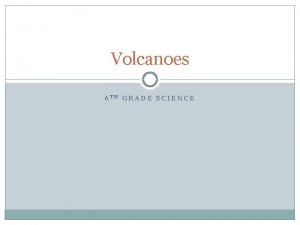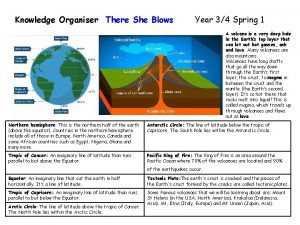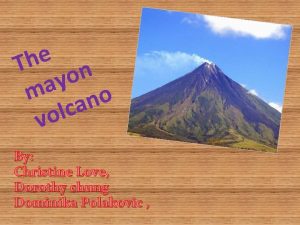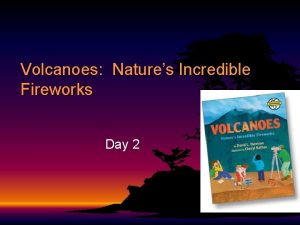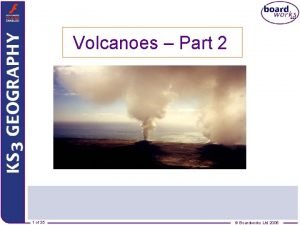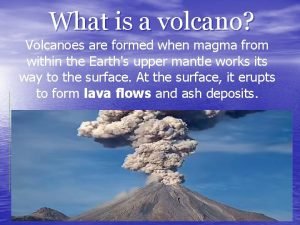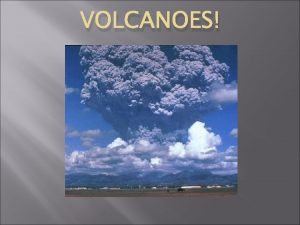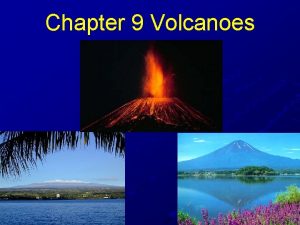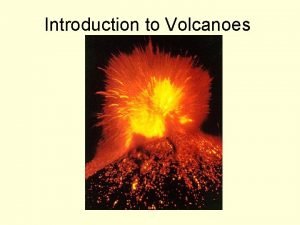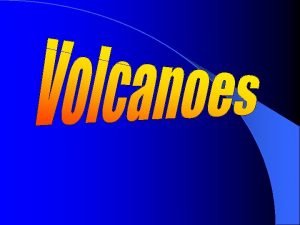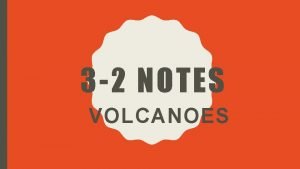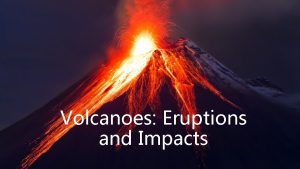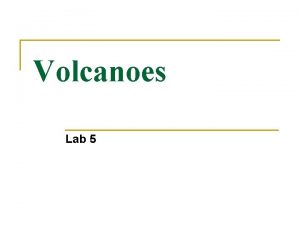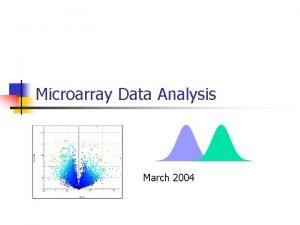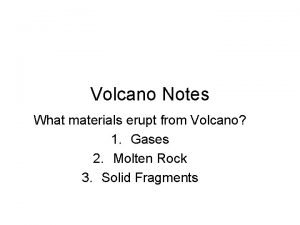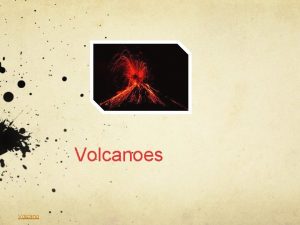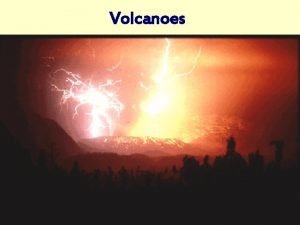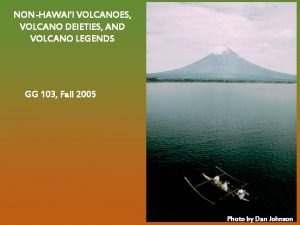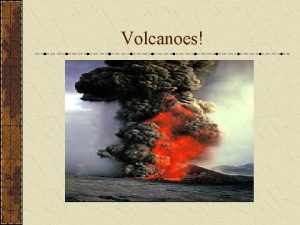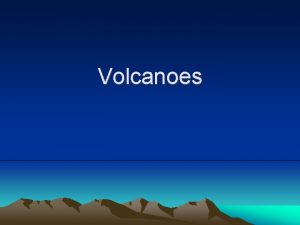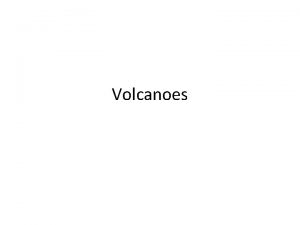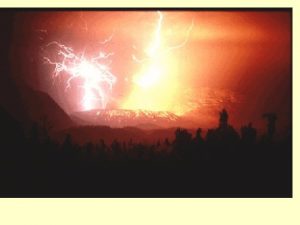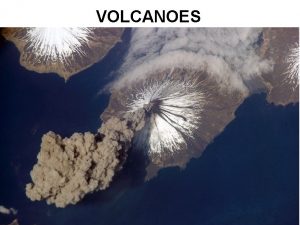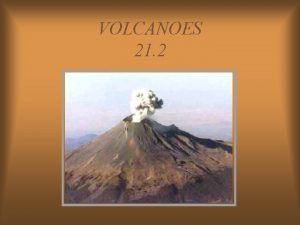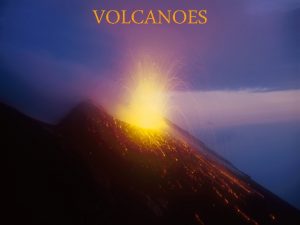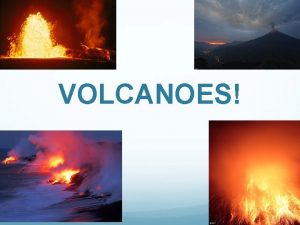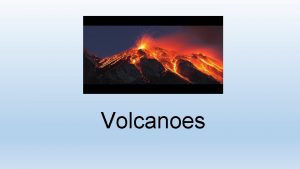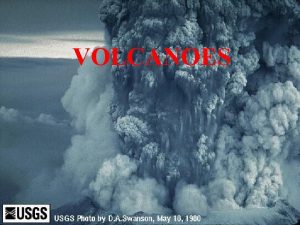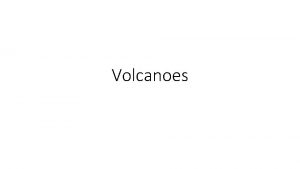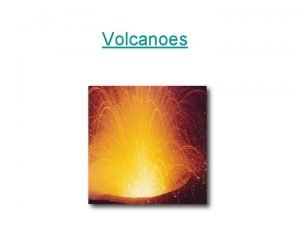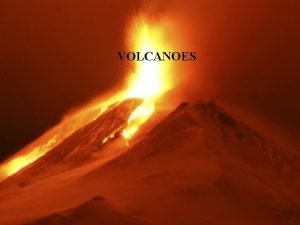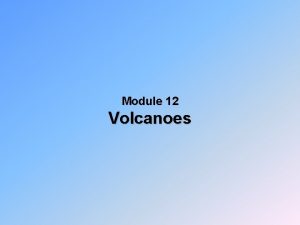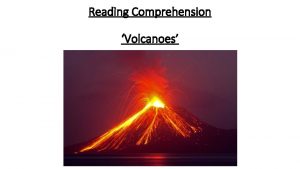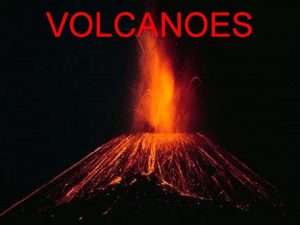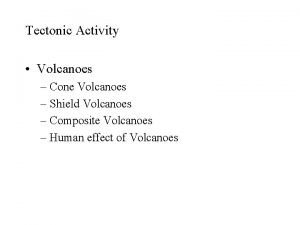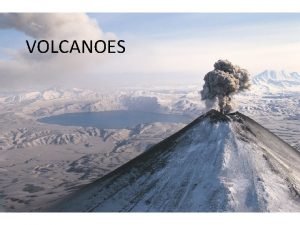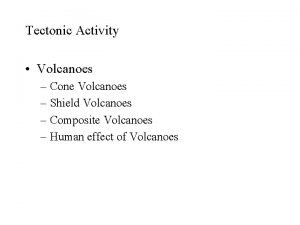VOLCANOES What is a volcano Volcanoes 101 5







































- Slides: 39

VOLCANOES

What is a volcano? • Volcanoes 101, 5 min • https: //video. nationalgeographic. com/ video/101 -videos/00000144 -0 a 2 cd 3 cb-a 96 c-7 b 2 d 221 d 0000

Volcanology: The Study of Volcanoes Magma (molten rock) from the earth’s upper mantle, is forced up through fractures between plate boundaries, due to intense heat and pressure.

What’s the difference between Magma and Lava? Magma that has reached the surface is called lava.

PARTS OF A VOLCANO

What comes out of a Volcano? • • Lava Rocks Ash Gases

• There are three main types of volcanoes depending on type of boundary involved:

Cinder Cone Volcanoes • Contains a single vent. • Small - rarely higher than 300 m • Made of Alternating layers of rock and ash and lava (not much lava)

Composite Volcanoes (Stratovolcanoes) • Steep-sided cone built up by alternating layers (strata) of rock and ash and lava. • More than one vent • Larger than cinder cones (up to 2, 400 m)


Composite Volcanoes: Famously destructive • Mt. St. Helens and Rainier in Washington, • Mt. Fuji in Japan, • Mt. Pinatubo in the Philippines, and • Mt. Etna in Sicily.

Shield volcanoes • Low, dome-shaped profile • Very hot, thin, runny lava • Thin, fast flowing lava can flow for many km producing gentle slope • Frequent but non- explosive eruptions

Pacific Ring of Fire

Active, Dormant, Extinct? • Active: Currently erupting or showing signs of erupting soon. • Dormant: No current activity, but has erupted recently. • Extinct: No activity for some time; will probably not erupt again.

2020 Take Home Assignment • See Volcano WS posted in Teams • Suggested reading: p 274 -276 new textbook online

Extras for 2021

HAZARDS • Kilauea volcano on Hawaii's Big Island has been spewing lava and toxic gases since a series of earthquakes in May 2018. • The lava has destroyed dozens of homes, with many more at risk as the eruptions continue • https: //www. wsj. com/video/footage-fromhawaii-kilauea-volcano-eruption/E 22 D 027552 B 3 -4577 -AB 03 -67 B 6040 C 7490. html

1. Lava May flow over large areas, destroying everything in its path.

2. Ash • Can reach very high altitudes and stay for a long time: • block sunlight, causing world temperatures to drop. • Can destroy crops and, buildings, clog rivers, damage machines.

• First-Ever Ashfall Advisory: The National Weather Service issued the first ashfall advisory for Hawaii on May 17, after ash plumes were released from Kilauea Volcano and rose to elevations of 30, 000 feet.

3. Lahar Flow of mud, water, ash and debris that can result when snow-covered volcanoes erupt.

4. Poisonous Gas: Sulfur Dioxide


5. Ground deformation

6. Avalanche (land slides) • The August 2010 Mt. Meager rock avalanche, showing where the slide originated (arrow, 4 km upstream), its path down a steep narrow valley, and the debris field

7. Volcanic Eruptions can trigger Earthquakes

• The town of Squamish is situated approximately 10 km from Mt. Garibaldi. • In the event of a major eruption of Mt. Garibaldi, which of the hazards has the potential to be an issue for the residents of Squamish?

Predicting Volcanic Eruptions

1. Increase in Seismic Activity • The term “seismic” refers to vibrations of the earth and its crust. • Seismic activity will increase in frequency and intensity before a volcano erupts.

2. Increase in Temperature • Satellites can record the surface temperatures at and around volcanoes. • As magma rises, the surface temperature of the volcano may increase. • Therefore, an increase in surface temperature can indicate that an eruption is likely.

3. Increased Amount of Gases Released • Just before an eruption, many volcanoes give off more gas. • The composition of the gas may also change before an eruption.

4. Bulging of surface of volcano • As magma rises before an eruption, it can cause the Earth’s surface to swell. • The side of a volcano may even bulge. • Scientists can use an instrument called a tiltmeter to measure the slope of the volcano’s sides. • Changes in the slope can indicate that an eruption is likely.

Predicting Volcanoes

Next year • How do volcanoes form at plate boundaries.

Assignment: Volcano Comic Strip 1. The type of volcano it is, with drawing of composition. 2. The warning signs of a volcano about to erupt. 3. The type of eruptive materials that come out of it. 4. The Hazards the nearby community is in danger of.

Active Volcanoes • An active volcano is a volcano that has had at least one eruption during the past 10, 000 years. • Either erupting or dormant.

Extinct Volcano • Has NOT erupted in last 10, 000 years • NOT expected to erupt again any time soon.

Cinder Cone Volcanoes • Alternating layers of rock and ash and lava (not much lava) • very violent, explosive, eruptions. • Tend to be made with one eruption.

Sunset Crater, Arizona
 Lava plateaus form when _____.
Lava plateaus form when _____. Most volcanoes occur __________. *
Most volcanoes occur __________. * How are volcanoes made
How are volcanoes made Where are volcanoes
Where are volcanoes Explain the elastic rebound theory
Explain the elastic rebound theory Erosion is a destructive force that
Erosion is a destructive force that Lithosphere definition
Lithosphere definition Lava and magma difference
Lava and magma difference How are volcanoes classified
How are volcanoes classified Active volcanoes map
Active volcanoes map Volcanoes on oahu
Volcanoes on oahu What do you already know about volcanoes?
What do you already know about volcanoes? Types of volcanoes
Types of volcanoes Chapter 8 earthquakes and volcanoes
Chapter 8 earthquakes and volcanoes Factors affecting volcanic eruption
Factors affecting volcanic eruption Paboeboe
Paboeboe Shield volcano
Shield volcano How do volcanoes change landforms
How do volcanoes change landforms Volcanoes of italy map
Volcanoes of italy map Three main ways volcanoes are created
Three main ways volcanoes are created Ring of fire volcanoes
Ring of fire volcanoes How are volcanoes formed
How are volcanoes formed Ecuador
Ecuador Name volcanoes
Name volcanoes Volcanoes knowledge organiser
Volcanoes knowledge organiser Differentiate active and inactive volcanoes
Differentiate active and inactive volcanoes Volcanoes nature's incredible fireworks
Volcanoes nature's incredible fireworks Magma chamber
Magma chamber Describe volcano
Describe volcano Bedrock volcano
Bedrock volcano Funnel shaped pit at the top of a volcano
Funnel shaped pit at the top of a volcano Parts of volcano
Parts of volcano Volcano doodle notes
Volcano doodle notes What type of volcano is this?
What type of volcano is this? Notes from a volcano
Notes from a volcano Shield volcano
Shield volcano Volcano type of eruption
Volcano type of eruption How to find p value from t statistic
How to find p value from t statistic Volcano iterator model
Volcano iterator model Notes from a volcano
Notes from a volcano
